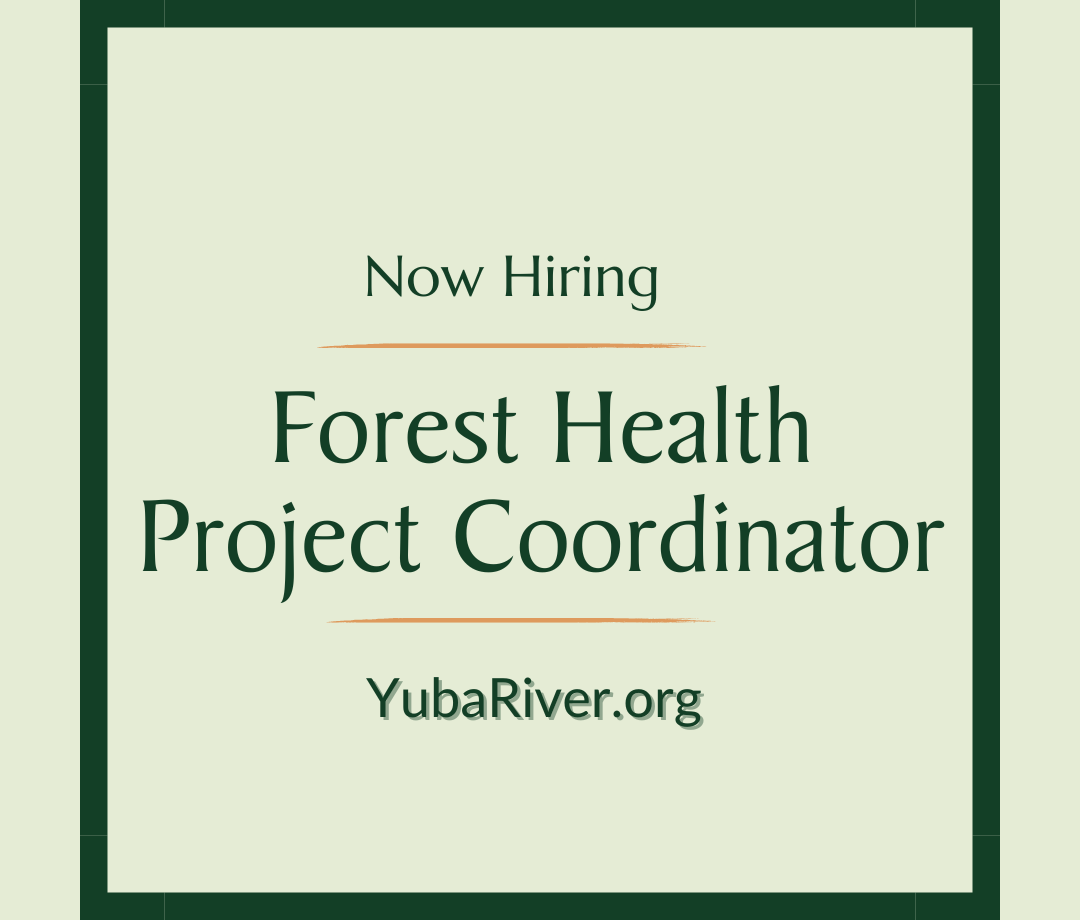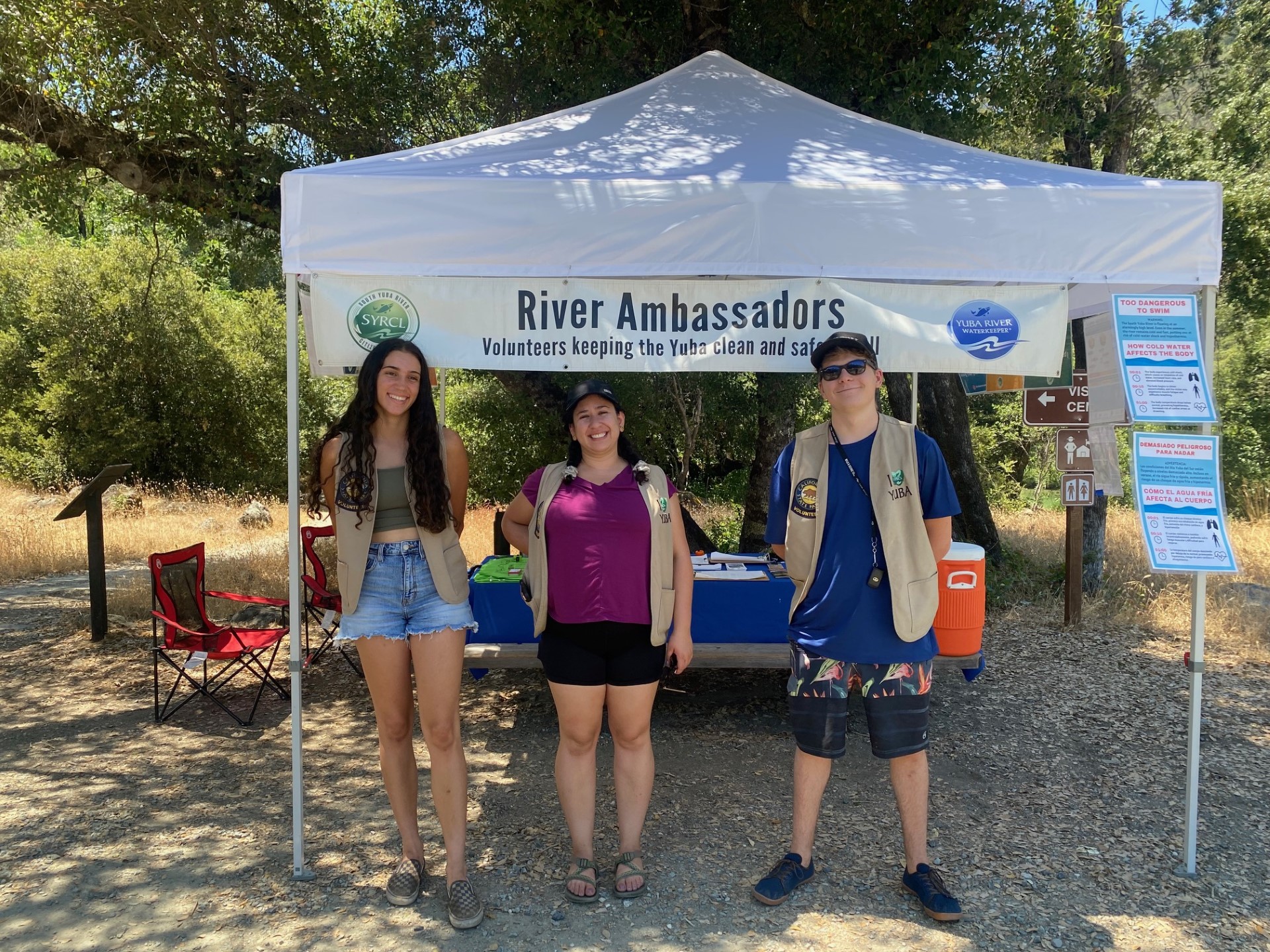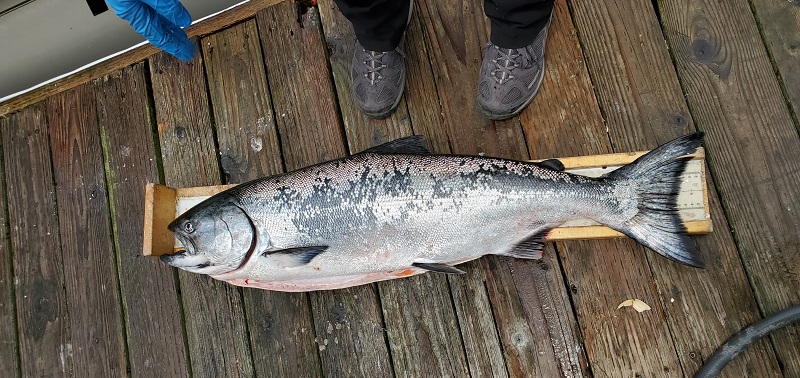Tracking Groundwater in Loney Meadow
This fall, SYRCL and the Tahoe National Forest successfully implemented a restoration project at Loney Meadow. Over the winter months we’ve been busy crunching numbers and are ready to share some of the exciting changes we’ve already detected in Loney Meadow as a result of the restoration.
One of the main reasons we see a wet meadow within the forest is due to the hydrologic regime, which includes a high groundwater table throughout the growing season. Hydrologic regimes are defined by the timing and amount of water within a forest or meadow. High groundwater tables create conditions that are unfavorable for conifer growth, which is why we see few conifer trees in meadows. However, it creates favorable conditions for a suite of herbaceous, rhizomatous perennial plant species, such as sedges, grasses, and the many wildflowers that bring us back year after year. A disturbed hydrologic regime, where groundwater levels are lower than they should be within a meadow can threaten a meadow’s existence and resiliency on the landscape.
But how do we know if a meadow has a disturbed hydrologic regime? How does one even measure a hydrologic regime?
There are physical indicators on the landscape that give us clues as to whether a wet meadow’s hydrologic regime has been disturbed. These cues include an incised/eroded and/or straightened stream channel, areas of bare soil within the meadow, decreased density of rhizomatous plants (plants with dense, spreading root systems), increased frequency of annual plant species, and conifer encroachment into the meadow (see photos below). These indicators are based on the concept of what a ‘pristine’ wet meadow with a functional, undisturbed hydrologic regime looks like. Within a pristine wet meadow, we expect vegetation to be dominated by herbaceous plant species and have relatively shallow, meandering streams with vegetated banks. We were alerted to the disturbed hydrologic regime at Loney Meadow by detecting the presence of incised channels, bare ground, and decreasing cover of rhizomatous vegetation.

These indicators, while alerting us to the presence of disturbance, don’t tell us the hydrologic condition within the meadow, how annual snow and rainfall impact the meadow, or how meadow restoration impacts the hydrologic regime.
To understand a meadow’s hydrologic regime, how this regime changes given the natural variation of snow and rainfall, how it compares to a meadow that is considered in good condition, and what happens to the regime after a stream restoration is completed, we need to understand where groundwater is on an annual or multi-year timescale.
We collect this data by installing groundwater monitoring wells that allow us to measure depth to water table. At Loney Meadow, teams of volunteers helped us to install ten groundwater wells in 2015. This allowed us to capture two years of Loney Meadow groundwater hydrology before we implemented the restoration project in the fall of 2017.
We read groundwater levels by installing data loggers in the wells that collect hourly data, conduct monthly calibration in the field, and finally download the data and create a graph of groundwater over time called a hydrograph. To better understand whether the hydrologic regime of a meadow is disturbed, we compared groundwater levels of the disturbed meadow (Loney Meadow) to that of a pristine or reference meadow (Upper Loney Meadow).
Luckily, our pristine reference meadow Upper Loney Meadow, is just upstream of Loney Meadow. And luckily again, we had a group of SYRCL volunteers in 2016 who eagerly helped us install three more groundwater monitoring there! Are you still with me? Because I’m about to show you some groundwater hydrographs!


Above are groundwater hydrographs from two of the ten groundwater wells within Loney Meadow. Time runs along the x-axis, depth to water table runs along the y-axis. The black vertical line in mid-September marks when the restoration at Loney Meadow was completed. Depth to groundwater is mapped for both the 2015-16 and 2016-17 water years (water years start in October and end the following year at the end of September, see link: https://en.wikipedia.org/wiki/Water_year). The 2015-16 water year is in blue, the 2016-17 water year is in red (for the locations of these wells see Map 1 below). What we see in these groundwater hydrographs is a decrease in groundwater level to 2 feet below the ground surface by mid to late June in 2015-16 (an average water year), and mid-July in 2016-17 (a wet water year). Two feet below the ground surface is a significant number because that is just about where the roots of most rhizomatous plant species can reach to access water. Late June is the middle of the growing season for Loney Meadow. Meaning, lots more days of hot, dry weather that meadow plants need to access water to continue to grow and reproduce.
In the 2016-17 water year we can see the impact of the restoration project in late September, where the groundwater levels immediately jump up from pre-restoration levels and end up 1.5-2 feet closer to the ground surface than they were in the 2015-16 water year.
Now let’s compare this to two groundwater hydrographs from our pristine (control) Upper Loney Meadow (see below).

The data represented on this graph is slightly different. We only have data from the 2016-17 water year, but we have groundwater data from two groundwater wells on the same graph (see Map 1 below for locations of these groundwater wells). In the above figure we see that the groundwater stays at the ground surface for one of these wells (UL01) through the whole season and never drops below half a foot in the other well (UL03). This gives us a better restoration target for what we’d like to see in wet areas of Loney Meadow.
We are excited to see what this water year brings, as Loney Meadow will experience the first full growing season with a hydrologic regime altered by restoration activities. We’ll continue to compare the hydrographs of Loney and Upper Loney Meadows to understand changes to the hydrologic regime of Loney Meadow. And rest assured we’ll be excited to share this with you next fall. We often take volunteers up to measure groundwater wells at Loney and Upper Loney Meadow. If this is something you might be interested in, please email Karl Ronning, SYRCL Hydrologist at: karl@yubariver.org.

Did you enjoy this post?
Get new SYRCL articles delivered to your inbox by subscribing to our ENews.




